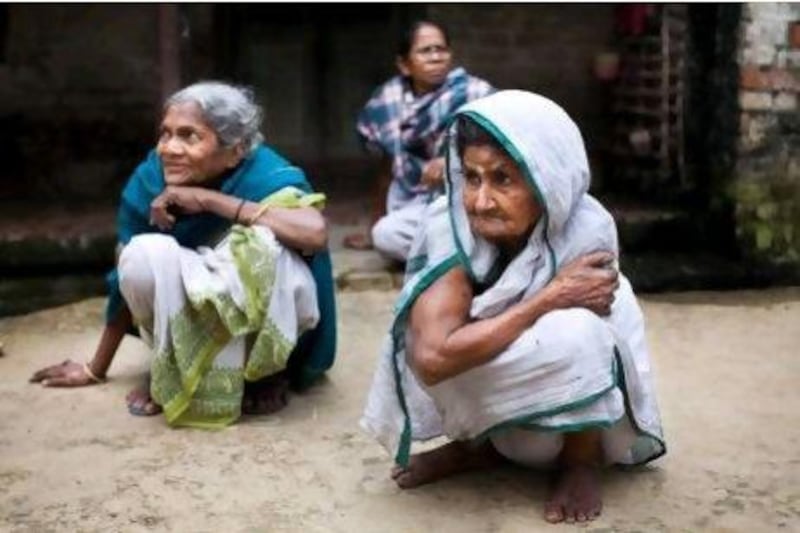KOLKATA, INDIA // Purnima Mandol has spent her whole life caught in a stateless limbo between India and Bangladesh.
"I was born here but I grew up like a refugee, standing in line for food handouts," said the 36-year-old, as she combed her hair outside her home in India's largest refugee camp. "Even now the government will not swallow us whole or spit us out."
Ms Mandol is just one of thousands in West Bengal's Cooper Camp waiting to be granted Indian citizenship.
The camp, which lies 160 kilometres from the border with Bangladesh, is a relic from an era when South Asia was carved into its current state.
Some of the camp's residents remain stateless 65 years after they arrived following the formation of India and Pakistan in 1947. Ms Mandol's parents arrived when Bangladesh was still part of Pakistan and died before they could gain Indian citizenship. Their daughter is still waiting.
From smugglers and illegal migrants to refugees, people have for years crossed over to the Indian side, whether fleeing persecution and conflict or looking for better economic opportunities.
There are no official figures for the number of illegal migrants that cross the border each year, but according to the South Asia Analysis Group, an estimated 5.4 million Bangladeshis live in West Bengal. That is the highest number of Bangladeshi migrants in any Indian state.
Those who can afford the bribes are able to obtain Indian citizenship documents that allow them to vote and own property. Those who cannot take work as day-wage labourers, rickshaw drivers and domestic helpers.
To stem the flow of illegal migration into India, the Indian government in 2007 decide to construct a 4,000km fence of barbed wire and concrete that spans five Indian States, including West Bengal, Assam, Tripura, Mizoram and Meghalaya. Construction was supposed to be completed in 2009 but continues across a terrain criss-crossed by rivers.
In many places the border is a complex maze with islands of territory inside each country.
Through the decades in Camp Cooper, tarpaulin tents have given way to thatched-roof homes.
There are an estimated 7,000 people living in the camp and about 20 per cent are still waiting for official documents, said Nripendranath Howladar, the chairman of the Cooper's Camp authority.
They survive on government handouts, afraid to leave the camps for fear of deportation.
"If they are illegal settlers, no one will openly come out and say that. They have learnt their lessons the hard way. Even those who came after the Partition are still waiting for their right to reside here," said Mr Howladar.
When what was then East Pakistan fought a war for independence with Pakistan in 1971, an estimated 10 million Bangladeshis fled to India. While most returned home after the creation of Bangladesh, many stayed and many more have come back over the decades.
By 1979, there was a backlash against the growing migrant population. In the Indian state of Assam, residents demanded that the Indian government put an end to the migration and deport Bangladeshis who had settled there.
Violence occasionally broke out between locals and immigrants. In 1983, 14 villages were attacked and more than 2,000 illegal Bangladeshi migrants were slaughtered in a six-hour period.
No one was ever convicted of orchestrating the riots and all criminal charges were dropped in a political accord designed to foster peace.
But the origins of the West Bengal refugee camp came during the creation of India and Pakistan which displaced an estimated 12.5 million people, one of the largest human movements in history.
Inside Cooper Camp, Saraswati Saha, 84, and Kamla Das, 90, recall how they came to be stateless.
Mrs Saha arrived in 1947 with her father-in-law, husband and daughter. She is the only surviving member. Her daughter died in the camp two years ago.
"We were brought into India on a train and transported here in lorries," Mrs Saha said. "We are still here."
Mrs Das remembers her journey along with Mrs Saha. She asked: "Are they still coming across the border? Tell them there is no hope here."
[ sbhattacharya@thenational.ae ]
Follow
The National
on
[ @TheNationalUAE ]
& Surya Bhattacharya on
[ @SuryatapaB ]





